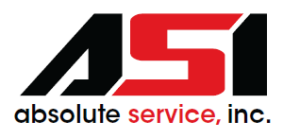In many organizations, when workloads rise or KPIs slip, the reflex is often the same: “We just need more hands on deck.” It’s tempting, but it’s a short-term fix with long-term costs—especially when the inefficiencies in our processes go unaddressed. At Absolute Service, Inc., we believe the smarter play lies not in headcount expansion but in optimizing processes across the board: publishing, content production, shared services, back office, you name it. Here’s why.
Inefficiency Has a Price Tag Much Bigger Than Headcount
- Hidden Overheads Multiply Quickly
Hiring people means salaries, yes. But it’s also benefits, training, workspace, technology, management overhead, communication, coordination, and often downtime or redundancy. These costs often compound—unseen and underestimated. ASI’s analysis shows that “on-paper” cost savings (e.g., switching tasks to virtual or offshore staff) can yield 50% or more savings when you strip away overheads. - Bottlenecks, Delays & Error Costs
A process that’s slow or involves many handoffs breeds delay, miscommunication, rework—especially in content, print, and digital publishing. Every error or delay costs not just staff time, but it impacts client trust, delivery schedules, and ultimately margins. Inefficient processes can mean some tasks taking twice as much time, or more than they should, which temporary hiring won’t fix. - Opportunity Cost of Talent Misuse
When your best people are stuck moving files, doing mundane data entry, or correcting avoidable errors, they’re not working on high-impact tasks—strategy, creativity, customer relationships, innovation. That’s a lost productivity dividend. At ASI, part of our mission is “highest and best use of time”, so that every person contributes at the top of their capability. - Scalability & Flexibility Suffer
Adding staff is costly, slow, and risky. If demand drops, excess capacity hurts. If demand spikes, hiring takes time. Efficient, optimized processes—automation, streamlined workflows, shared services—are more nimble. They allow a business to scale up or down without cost explosion. ASI’s hybrid U.S./Philippines model has 24/7 shifts, shared services, and virtual staffing—all examples of structural flexibility. - Culture, Morale & Quality Erosion
Overworked staff, unclear processes, repetitive fixes—these hurt morale. When employees feel processes are broken or chaotic, it undermines trust, leads to burnout, and risks turnover. Worse, quality suffers. In publishing and content production, quality is non-negotiable. Persistent inefficiency leads to creeping quality issues. ASI’s commitment to continuous improvement ties directly into maintaining service excellence.
What Process Optimization Looks Like: Lessons from US
We don’t talk about process improvement in theory—we do it, across all our offerings. Here are some of the levers we’ve pulled (with success) that others may find useful:
- Business Process Improvement & Staff Optimization: We help clients map out their processes end-to-end, identify low-value tasks and redundant steps, and check for waste. Then we redesign, often moving certain tasks offshore, virtualizing roles, or introducing automation to eliminate repetitive manual work.
- Shared Services & Hybrid Models: Rather than duplicating similar support roles in different departments or teams, creating centralized or shared service centers (especially facilitated by systems like SAP) saves cost and improves consistency. ASI has expertise here.
- Technology + Outsourcing Synergy: Using the right tools (workflow system, digital asset management, automation), combined with reliable outsourcing partners (virtual staff, offshore production), can deliver huge gains. Not just in cost, but in speed and quality.
- Continuous Improvement Culture: It’s not a “one and done.” ASI emphasizes ongoing review—getting feedback, measuring metrics (turnaround times, error rates, cost per unit), adjusting, refining. That’s how we catch, and fix, inefficiencies that creep in as companies grow.
When Headcount Makes Sense — But Only as a Last Resort
We’re not saying “never hire.” In many cases, you do need capacity increases—new specialties, bursts of demand, changing business lines. But hiring should be informed by:
- Whether all existing capacity is being fully utilized (or whether people are blocked by process issues).
- Whether workflow tools, handoffs, approvals are causing waiting or rework.
- Whether specificity of roles might allow for specialization rather than broad, overlapping tasks.
- Whether scaling can occur by extending hours, outsourcing, or leveraging hybrid/virtual staff, rather than just full-time local hires.
Return on Optimization: What You Gain
If one commits to process optimization over simple headcount increase, the returns can be substantial:
| Area | Benefit |
| Cost Reduction | Lower recurring fixed costs; reduced overhead; fewer errors to correct. |
| Speed & Agility | Faster turnaround, ability to respond quickly to market or client changes. |
| Higher Quality | More consistency; fewer mistakes; better customer satisfaction. |
| Employee Satisfaction | Less burnout; clearer processes; more high-value work; more meaningful contributions. |
| Competitive Advantage | Operating leaner, cleaner, faster than rivals; pricing flexibility; better margin control. |
In today’s business environment—fueled by digital transformation, remote/hybrid staffing, growing client expectations—inefficiency is a growing liability. Headcount growth may give the illusion of “solving capacity,” but unless underlying processes are optimized, it often amplifies inefficiency rather than reduces it.
Our experience has taught us: the organizations that win are those that invest in process first—map carefully, simplify, automate, optimize—and let any hiring be the enrichment rather than the escape from bottlenecks.
If you’re curious how process optimization could transform your cost base, agility, or quality—for publishing, content production, shared services, or in your back office—let’s talk.
